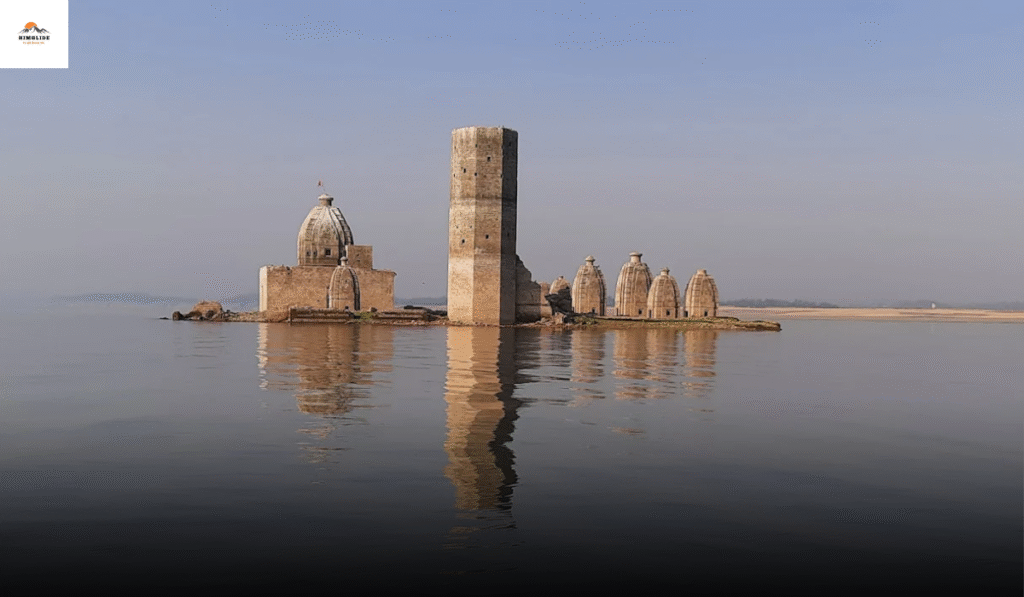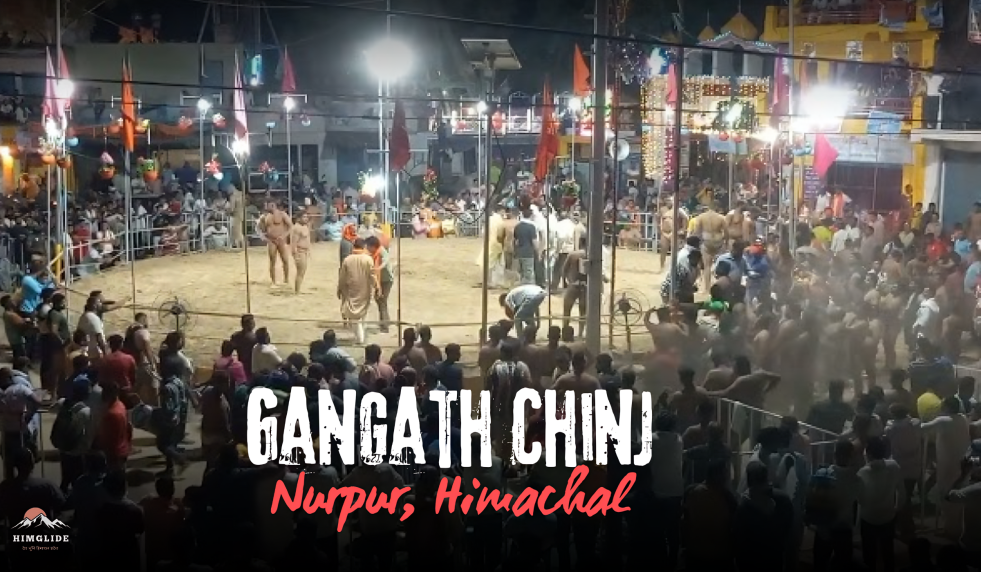Bathu Ki Ladi Temple, also known locally as Bathu di Ladi, consists of a group of ancient temples that remain submerged under the reservoir of Maharana Pratap Sagar (Pong Dam) for most of the year. The term “Ladi” means a series or a row, and the temples are indeed constructed in a straight line, giving the complex a distinct layout. These temples become accessible only during the summer when the water level of the Pong Dam recedes.
This hidden gem in Himachal Pradesh is not just a religious site but also a visual and cultural treasure, ideal for explorers who seek solitude, history, and natural beauty in one place.
History of Bathu Ki Ladi Temple
According to local legends and interpretations of Bathu Ki Ladi history, the temple dates back to the time of the Mahabharata. It is said that the Pandavas attempted to build a staircase to heaven at this location during their exile. Although there is no formal archaeological record to verify this, the stories have been passed down through generations and are deeply rooted in local belief.
The temple complex was permanently submerged after the construction of the Pong Dam in the early 1970s. However, the architectural remains continue to draw interest from historians, spiritual seekers, and photographers alike.
Architecture and Unique Structure of the Temple
The Bathu Ki Ladi Mandir complex comprises several temples made of stone blocks, assembled without mortar. This ancient style of construction has helped the structure survive decades of being underwater. The main shrine is dedicated to Lord Shiva, and the surrounding shrines are believed to honor other deities from Hindu mythology.
Despite their constant exposure to water, the intricate carvings, columns, and dome structures remain remarkably well-preserved. The linear arrangement of the temples gives the entire complex a unique and harmonious appearance.
Also Read: Churdhar Trek: Distance, Best Time to Visit, and Complete Guide for Trekkers
Location and Geography: Where is Bathu Ki Ladi Temple?
Bathu Ki Ladi is located in the Kangra district of Himachal Pradesh, near Jawali town. The temple sits within the catchment area of the Pong Dam, also known as Maharana Pratap Sagar, a large reservoir created on the Beas River.
It lies at the base of low hills, surrounded by calm waters and occasional sightings of migratory birds, making it a picturesque and peaceful location. This setting also enhances its spiritual ambiance, especially during sunrise or sunset visits.
How to Reach Bathu Ki Ladi Temple
From Kangra, the Bathu Ki Ladi Temple is about 50 to 60 kilometers away. The most commonly used routes are via Jawali or Dhameta.
- By Road: You can drive to Bathu village or Nagrota Surian. From these points, you can either walk to the temple if water levels are very low or hire a local boat to cross the shallow waters.
- By Train: The nearest major railway station is Pathankot, located around 65 to 70 kilometers from the temple area.
- By Air: The closest airport is Gaggal Airport near Kangra, approximately 50 kilometers away.
- By Boat: During the dry season (March to June), locals offer boat rides to the temple from Bathu Ghat or Nagrota Surian.

Best Time to Visit and Seasonal Accessibility
The best time to visit the Bathu Ki Ladi Temple is between March and June. This is when the water level in the Pong Dam recedes enough to expose the temple structures. In other months, especially during the monsoon and winter seasons, the temple remains fully submerged and inaccessible.
It is always advisable to check local conditions or consult local guides before planning your visit, as the water levels can vary depending on rainfall and dam management.
Things to Do Around Bathu Ki Ladi Temple
Besides visiting the temple complex itself, the surrounding areas offer several attractions and experiences:
- Birdwatching at Pong Dam Wetlands, especially in winter when migratory birds flock to the region
- Exploring Jawali town for a glimpse of Himachali lifestyle and local temples
- Boating on the reservoir, particularly during sunset for serene views
- Photography of submerged structures and scenic landscapes
- Connecting with local fishermen or boatmen to hear their stories and folklore
Travel Tips for First-Time Visitors
- Plan your visit between March and June for accessibility
- Carry essentials like water, snacks, and sunscreen as there are no nearby shops
- Hire a local guide or boatman for safe travel
- Wear appropriate footwear, especially if walking on lakebed areas
- Mobile networks may be weak, so download offline maps in advance
Conclusion
The Bathu Ki Ladi Temple is not just a religious monument but a living example of history, devotion, and architectural brilliance. Hidden under water for most of the year, it appears like a forgotten relic once the waters of Pong Dam recede. From the myths of the Mahabharata to its stunning stone structures, this temple in Bathu Ki Ladi Himachal Pradesh offers a deeply enriching experience for all who seek it. Whether you are a traveler, a devotee, or a history enthusiast, visiting Bathu Ki Ladi is sure to leave you with a sense of wonder and serenity.
Frequently Asked Questions
When is Bathu Ki Ladi Temple visible?
The temple is visible only during the summer months, usually from March to June, when the Pong Dam water level recedes.
How far is Bathu Ki Ladi from Kangra?
The distance from Kangra to Bathu Ki Ladi is approximately 50 to 60 kilometers by road, depending on the route.
Is the temple accessible by foot?
Yes, during low water levels, the temple can be reached by walking across the dry lakebed. Otherwise, it requires a boat ride.
What is the history of Bathu Ki Ladi Temple?
Locals believe the temple was built by the Pandavas during the Mahabharata era. It is now mostly submerged due to the Pong Dam.
Are there any facilities near the temple?
No, there are no shops or amenities at the site. Visitors should carry their own food, water, and other essentials.







